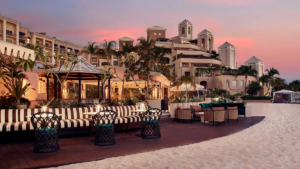
My Plot for a Science Fiction Movie…
And, Like Most Good Science Fiction Movies, It Will Probably Come True!
I’ve been saying this for several years, knowing how implausible it sounds.
I’m talking about my observation that several of the largest social media platforms (and to a lesser extent Google) appear to be evolving into powerful digital nation-states with their own citizens, their own laws, their own penal systems, their own educational and communication systems, and their own forms of taxation.
And now it looks like members of the political classes have finally figured out what’s happening and are taking action to stop it.
I said the expansion of their power was inevitable because these digital nation-states will be providing their digital citizens with more and more of what they really want from life – comfort, entertainment, social engagement, and affirmation. The largest of them would therefore become increasingly rich through their voluntary taxation schemes (subscriptions, fees, etc.). They would also become more formidable than physical nations in the sense that they will become, by using their algorithms as they already do, more influential in the news and ideas their citizens are exposed to.
When I look at the digital landscape today, it seems clear that Amazon, Apple, X, and Google (I feel like I missed one. Did I?) are already in this position.
I also said that when members of the political classes that now control physical nations realize how much they are competing with these rising digital nation-states for money and power, they will attack and destroy them through legal means or appropriate them (in form or in substance) and thus maintain their dominance.
The Chinese were the first to recognize the potential threat and established their own state-controlled social media and internet search companies. The Russians and some of the larger Islamic states came next, exerting the one asset they have that the digital nation-states lack: physical force. And now you can see it happening in the US, in most European countries, and even in South and Central America. (Look at what Brazil did to X last week.)
If these big countries are successful at taking over the emerging digital nation-states, they will be in a position to gradually absorb most of the smaller countries of the world. They won’t have to physically conquer them. They will merely have to infiltrate them with their own digital platforms.
This will be welcomed by the members of the political classes that dream about a single world government. But I don’t see that happening any time soon because of the still very deeply established and active Cold War industry and because of some fundamental differences in cultural values that will be difficult to dissolve.
What I think we will end up with is five or six mega-countries that would break down as follows: the United States of America (with Canada and dozens of other countries), the United States of Europe (sort of like the European Union), the United States of China (with dozens of other countries), the United States of Russia (with dozens of other countries), and the United States of Islam, with one possible addition: Japan.
Speaking of digital nation-states having their own cultures, here’s a glimpse of what Google’s will include.








